The ferry across the ‘Atlantic Sea Channel’
By Trevor Boult
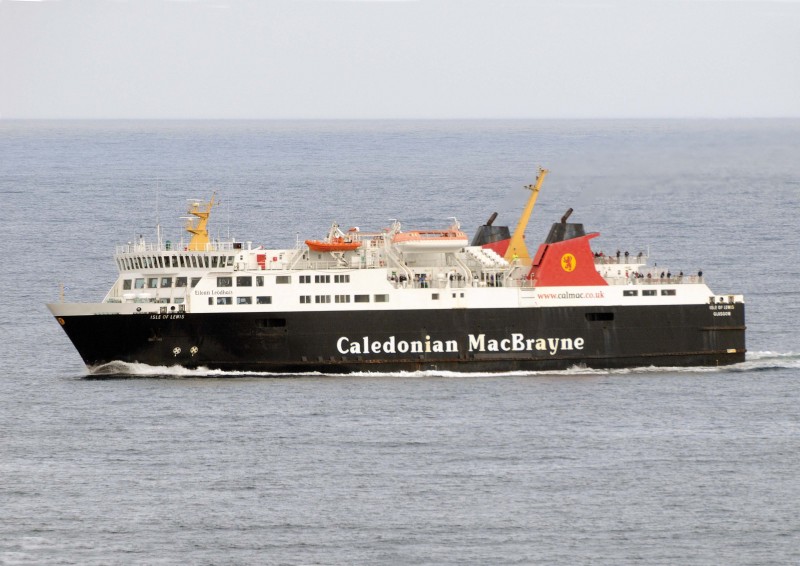
Two hundred years ago, in the summer of 1814, the famous author Sir Walter Scott was sailing in Scottish waters aboard a lighthouse yacht. Invited to do so by the Commissioners of Northern Lights, his diary of this notable six-week voyage records how impressed he was with the awesome grandeur of the Minch.
This broad strait off Scotland’s NW mainland coast is bounded to the west by the Outer Hebridean islands of Lewis and Harris, to the south by the Isle of Skye. To the north it is fully exposed to the ocean, rightly earning the description of an ‘Atlantic sea channel’.
On rounding Cape Wrath, at the northern extremity of the Minch, and setting course for Lewis, Scott describes the dramatic unfolding prospect of the mainland, ‘on sailing westward a few miles, the coast assumes the true Highland character, being skirted with a succession of picturesque mountains of every variety of height and outline. We would willingly have learned the names of the most remarkable, but they are only laid down in the charts by the cant names given them by mariners, from their appearance, as the Sugar-loaf, and so forth…’
Of the night-time beauty of the crossing, Scott continues, ‘…we remain on deck long after it is dark, watching the phosphoric effects occasioned, or made visible, by the rapid motion of the vessel, and enlightening her course with a continual succession of sparks and even flashes of broad light, mingled with the foam which she flings from her bows and head.’
The Minch has long been an important and busy shipping lane. Today, the through-routes are defined and controlled by Traffic Separation Schemes. Crossing this run of north-south traffic is the regular preserve of the lifeline ferries which serve the chain of islands that collectively make up the Outer Hebrides. The administrative centre is Stornoway, the islands’ principal town. Developing around a sheltered natural harbour, it is an important port and the historic terminal for the northernmost ferry route of the Western Isles.
Since 1973, the mainland terminal has been at Ullapool. On the east shore of Loch Broom, Ullapool was founded as a herring port in the late 18th century by the British Fisheries Society. Although still only a small town, it is a major tourist destination and vital onward link to the Outer Hebrides.
The inauguration of the new terminal and linkspan at Ullapool was made by the ferry Iona. She was the first drive-through ro-ro built for the fleet of David MacBrayne. Iona went on to be an extremely versatile and fast ferry which operated on a variety of Scottish routes. Her role on the Stornoway service was taken over for a time by Clansman. In her turn, she was superseded on the route by Suilven, named after the ‘Sugar-loaf’ mountain so admired earlier by Sir Walter Scott.
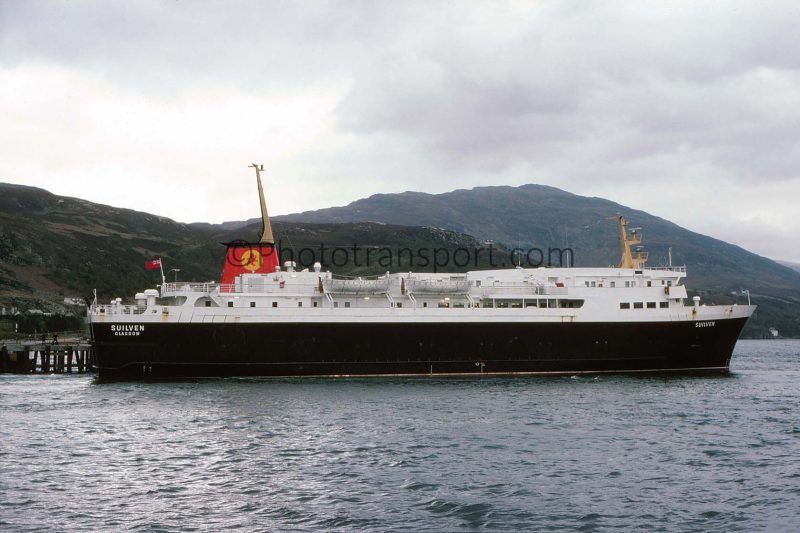
Don Smith/phototransport.com
Built in Scandinavia, Suilven was intended for service in Oslofjord, but was bought off the stocks and modified for the Lewis service. She operated for 21 years on the route before being sold. She went on to provide ferry services in New Zealand and Fiji. Her replacement on the Lewis service in 1995 was the new-build Isle of Lewis.
Isle of Lewis was the largest vessel built by Fergusons at Port Glasgow and was a further ferry design development of Isle of Mull and Caledonian Isles, with a fully enclosed vehicle space and two mezzanine decks. On sea trials she reached just under 19 knots, making her the fastest ever motor vessel in the fleet of Cal-Mac, or its predecessors. Assigned to the prestigious route referred to as the ‘marine motorway’, she reduced the previous crossing time by some 45 minutes and offered enhanced onboard facilities for passengers.
An institution in her own right, her new-build replacement, Loch Seaforth, is now taking over. Isle of Lewis is to remain in full readiness whilst the capabilities of the new vessel and other planned changes to the route’s provision are proved.
February may be a short month, but it can seem interminable to the winterweary island inhabitants of Lewis and the crews of the ferry Isle of Lewis which, for the last nineteen years, has been the principal mainland link across the oftenstormy Minch. Donald MacLeod is halfway through the early-shift roster with Stornoway Port Authority. A native of Lewis, whilst downing his first hot cuppa of the day before heading to the harbour for work, he gazes beyond his reflection in a window of the family home southwards into the blackness of the outer approaches to Stornoway Harbour. Pierced by the rhythmic white morse-like blink of Sgurr na Circe navigation buoy, which warns coastal shipping of Chicken Rock, Donald absently recalls his time as a navigating officer with the Northern Lighthouse Board, of the occasions he has assisted in the maintenance of this, and the red buoy at the harbour entrance. It is a source of quiet pride.
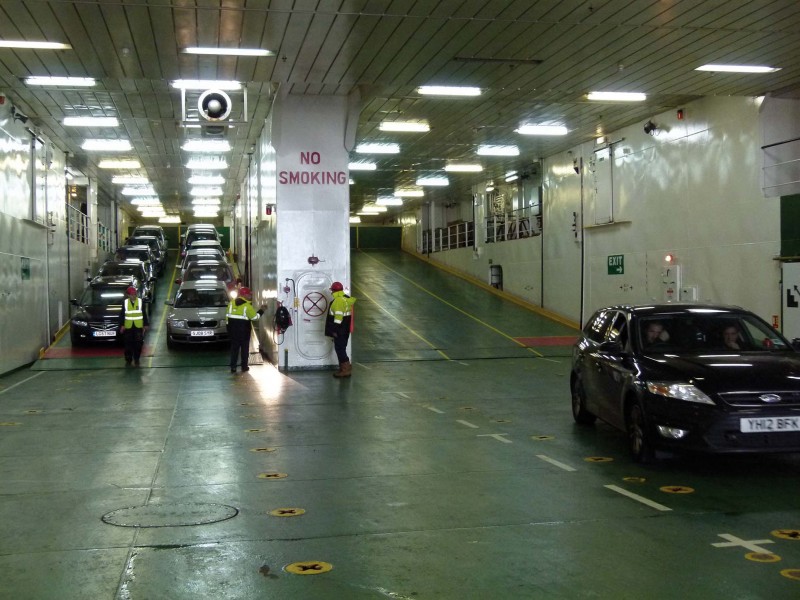
Years later, they have a modified significance for him, as a harbour official, where the comings-and-goings of many different vessels is of professional concern. Amongst the most regular is the Cal- Mac ferry Isle of Lewis; always a welcome sight to residents. Her night-time pattern of deck and navigation lights is as wellknown as her robust and no-nonsense appearance during the day, as she carries a ‘bone in the teeth’ at her bows until the very approach to the harbour mouth. Walking his beat in the back harbour, already several of the fishing boats are showing tentative signs of life. The vacant ro-ro freight terminal is poised for the arrival of Muirneag, well advanced in her night crossing from Ullapool. Standing mute on the promenade, the statue of a fisherwoman is silhouetted by the glare of a ship’s floodlights reflected in the inky harbour water. At her berth, Isle of Lewis is an imposing presence. She, too, is beginning to stir. Donald continues his measured pace towards the ferry terminal. He has timely duties to perform there with the mooring ropes and adjustment of the linkspan.
Onboard Isle of Lewis a familiar muted ‘clunk’, felt rather than heard, confirms to those who are still a-bed that the working day is beginning. The slight accompanying jolt initiates the raising of the bow visor. On the bridge, the watch officer keeps his finger depressed on the control button until the movement is complete and the retaining bolts sighted in place. The forward view is now obscured by a wall of steel, its deck-green hue thrown into lurid life by the bridge-front floodlights.
Assembling beneath, the forward mooring party adjust the ropes in preparation for hauling the ship ahead from her overnight position towards the linkspan. There is corresponding activity at the stern. At the top of a high spring tide, amidships the crew gangway is at a steep angle. It is lowered to the quay and disconnected from its lifting bridle.
The powerful mooring winches easily haul the ship forward, the radioed countdown of distance resounds distinctly from the handsets at bow and stern, as the quartermaster aligns the gangway recess with the passenger access ashore. In position and ‘all secure’, permission is given for the bow ramp to be lowered: a sequence of several minutes during which the initial inrush of chill morning air sends an involuntary shudder to the loading officer necessarily captive at the controls.
Nods are exchanged between ship and shore personnel as the loading officer treads the linkspan, set unusually high to compensate for the level of tide. Behind a wall of glass, at the futuristic flying-saucershaped terminal, in the well-lit office, staff greet the enquiring officer who steps in from the cold. Peter, the coordinating marshal ashore, reassures that the ensuing load holds no surprises.
Having raised the barrier at the entrance to the marshalling area, the larger commercial vehicles are amongst the first to arrive: regulars whose names can be counted on to appear on manifests. The capacious caverns of the ship’s vehicle deck will not be hard pressed, in contrast to the many multifarious full-capacity loads of the high season, where main deck and mezzanines are of necessity subject to the ferryman’s spatial knack of making every inch count.
Front-of-house desk staff welcome foot passengers as they check in. Overhead, in the airy octagonal auditorium, banner artworks hang delicately, colourfully depicting many scenes and aspects of Hebridean life. Ushered towards the enclosed walkway, the passengers are soon enveloped by the warm inviting familiarity of the ship’s foyer. For the next four hours she will be ‘home’. The lounge is a favourite, offering comfortable seating and an enticing view forward through wide picture windows.

Directly above, on the bridge the routine but thorough tests and checks of equipment are being carried out, in collaboration with the engineers in the control room. In the machinery spaces, their own specialized checks are well advanced. The galley, too, is nearing readiness.
The vehicle deck is beginning to load: a call for two motorcycles at the head of traffic, they are coaxed by their riders over ramp and waved onwards by the bosun towards the stern where his red-hatted colleagues, the ship’s carpenter,‘chippy’, and crew, guide and secure the awkward machines. Three vehicles whose occupants declared special needs follow on and are parked in line close to the ship’s lift at the aft end of the casing. Running lengthways, it divides the space asymmetrically into two and three lanes. Into the latter, close to the centreline, the few heavy commercial artics and ‘rigids’ are placed, their drivers quietly glad that no awkward manoeuvres were necessary and promising a swift departure at Ullapool.
The remaining variety of smaller traffic is amply accommodated on the ‘narrow side’. As the straggle of occupants casually head for the exits they relish the winter’s ease of avoiding the peak season’s regular use of the mezzanine decks, currently stowed high above their heads.
As the scheduled departure time of 0700 approaches, the rasping sound of the claxon warns that the bow ramp is being raised. Beyond sight, the folding movement of the ramp extension is monitored on CCTV by the officer at the controls. Secure, and reported as such to the bridge, where the green light on the schematic panel confirms, he inspects the vehicle deck and load before taking the stairs to the foyer, securing the heavy fire doors behind him. Following the general company principle of ‘Load-and-Haul’, he will soon exchange hats for the navigational watch, the ‘haul’ to Ullapool.
The ropes singled towards an efficient departure, the mooring party aft, with an unobstructed view astern, observes that others are also intent on heading for sea. Several outbound fishing boats abreast of the freight terminal delay the ferry’s initial manoeuvre astern. Likewise, their outward passage to the harbour entrance dictates a sedate progress by Isle of Lewis, keeping the well-lit bevy of craft at a safe distance ahead. Abeam of the stocky Arnish Lighthouse they fan out towards their individual fishing grounds nearby. A careful monitoring eye is kept on them from the overtaking ferry as she assumes her initial course across the Minch.
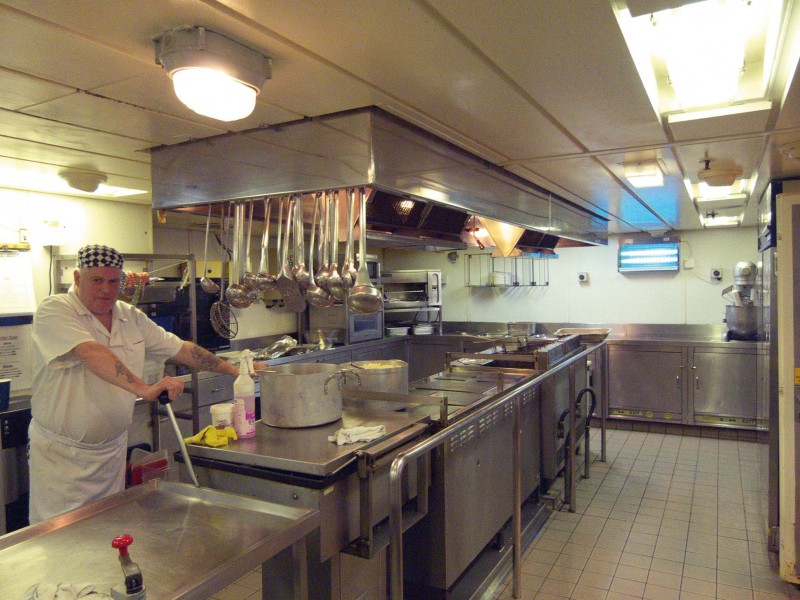
Half an hour passes before the sheltering influence of the Eye Peninsula to the north gives way to the open sea and the remnant of a swell that only a day earlier had seen Isle of Lewis make the first of several dog’s leg courses, skirting the coast towards Tiumpan Head before making a bold and large alteration to the southeast, heavy weather tactics to keep the seas well behind the beam, and a rolling motion of safe and acceptable limits. Relative comfort then comes at a price, passage times and the working day are extended, to the frustration of passengers and crew alike.
The familiar steaming lights of Muirneag pass as she closes with the coast. A regular daytime presence in Stornoway, her winter charter work makes her a creature of the night. Dawn grows imperceptibly, its first tentative signs observed through the many full-length windows of the bridge which can provide what one enthusiastic captain has described as the best view from an ‘office’ window anywhere in Scotland: the coasts and mountains so lauded by Sir Walter Scott.
To the foot passengers newly embarked on the regular coach service from Inverness to Ullapool, to connect with the ferry, they are also immersed in the spectacle of the dawn and its aftermath, on the scenic route across sparse and spectacular upland country. The recent snows have retreated from the roads but the higher mountain slopes blush roseate against the cool sky as they are touched by sunlight. Viewed from the Minch, the backlit monolithic peaks are stark in their singular grandeur: Suilven, Cul Mor, Stac Polly. Their slowly-changing aspects herald the ferry’s transition from the open Minch into the broad expanse of waters bounded by Assynt, and Wester Ross to the south.
Like guardians, the Summer Isles spangle the approach. The outermost and most exposed is Priest Island. It displays a low and deeper-toned hue fine on the port bow. Spectators ensconced in the lounge observe it resolving into the drab and muted earth tones from the ravages of winter, as Isle of Lewis alters course at its southern point. To the south, in a semicircular bay, Gruinard Island hides its notorious past as the former site for testing the effects of anthrax. A steep-sided defile probes deeply into a rugged interior, Little Loch Broom, not in the least inferior to Loch Broom itself, beyond the dividing peninsula, and wherein the ferry’s destination lies.
Her easterly course leads midway between the mainland and the Carn Skerries offshore. A southeasterly course now brings the lighthouse of Ru Cadail ahead, the waypoint and entrance to Loch Broom.
Already, the Ullapool office and the ship’s bridge have been in contact. Newly pencilled on a notepad in shorthand code are details of the anticipated backload, information digested by the officer about to assume his first ‘Load-and-Haul’ duties of the day. Looking half-absently forward to the approaching red navigation buoy lying off the low spit of land that marks the final sharp turn towards the harbour at Ullapool, the load details translate in the mind’s eye into a spatial arrangement and order on the vehicle deck. It is a tentative plan that will modify when met with reality, aided by often hard-won knowledge, including shortfalls overcome, and by the diplomacy of long-serving hands whose experience cannot be bettered.
The coach passengers, having recently alighted and hauled a miscellany of luggage into the airy terminal waiting room, gaze at Isle of Lewis as she makes her sudden and dramatic appearance beyond the row of neat white-washed dwellings above the shingle foreshore. It is only minutes before the ship is turned through a right-angle and backed to her berth. She brings with her all the life and bustle that makes the intimacy of any such arrival a spectacle. The ferry berth is immediate to the town’s waterfront, its operations an open book to passers-by or holiday children playing at the water’s edge. Yet Ullapool retains its charm and integrity by discreetly absorbing the vehicle area behind the facade of its southfacing seafront. But it is not an ideal space. The physical constraints are a product of history and the increasing demand for greater capacity, which provides added interest for the shore marshalling teams.
As off-loading proceeds, already the large stores lorry is poised to be taken onboard to deliver its catering goods. Through the side shell door, a consignment of oils is delivered, the attending engineer, with well-worn parka over his boiler-suit, and woolly hat, takes in the harbour sights beyond the ice-making tower which supplies the needs of the fishing community. On the broad quayside trawl nets are spread for repair. Alongside, the excursion launch Summer Queen receives maintenance in anticipation of her next summer season of carrying enthralled trippers out to the Summer Isles.
Relieved of overnight commercial vehicles by Muirneag, nevertheless a further consignment of heavy plant and materials for on-going major building works in the Outer Hebrides provides both bulk and weight for the 1025 departure. Loch Broom is otherwise empty, the days when it was populated by anchored ‘klondykers’ awaiting their cargoes of fish still recalled by the townspeople and senior staff on the ferry.
The westerly crossing is colourful, with the sun over the left shoulder, highlighting the brilliant orange floats of fishing gear beyond Priest Island, for Isle of Lewis to weave between. The winter clarity picks out the mountains of Harris, low on the horizon. It is a day for passengers to take to the lee side, to stand at the rails or promenade in the weak sunshine. The mainland recedes, but the prospect of Skye and the Shiant Islands to the south remain. Beyond them, the company ferry Hebrides is plying her alternating service across the Little Minch from Skye to Harris and North Uist.
The day advances and Isle of Lewis completes her first return sailing. It will be sunset as she berths again at Ullapool, her final passage outward from Loch Broom in the blackness of evening aided as much by radar and supporting displays as the confident beam of Ru Cadail lighthouse, the succession of invisible headlands, skerries and islands all but devoid of marks. In the glass-house of the bridge with its potential for reflections, the carefully- drawn curtains which envelop the chart-table restrict the light that would otherwise impede night vision.
One hour from Stornoway, routine contact is made by radio to the harbour, confirming the day’s final arrival time. No sooner is the call finished than the ship is hailed by the locally-based Coastguard rescue helicopter which is operating nearby. The familiar voice of Chief Pilot John Bentley requests permission to winch a crewman onto the ship’s designated landing zone as a night-time exercise. It is a regular occurrence, one which adds drama for the passengers occupying the homely bar aft. Forewarned of the imminence of overhead noise and downdraught, eyes peer expectantly through rain-dappled windows at the lights of the helicopter as it approaches from the stern. Maintaining a steady course, Isle of Lewis and the helicopter play out the principles of relative motion and apparent wind, the enfolding blackness pierced by the air craft’s searchlight. In its beam it holds captive the yellow-painted zone on deck, the target area for the winchman who is already well on his descent. Releasing his harness clip, he exchanges pleasantries with the crew standing by, before being lifted off to rejoin his airborne colleagues as they now head for home, duty done for the day.
As the helicopter lights diminish and meld into the subdued neon glow of distant Stornoway, the blink of Tiumpan Head Lighthouse at the tip of the Eye Peninsula eventually gives way to that of Sgurr na Circe buoy. Above and beyond, and off duty, Donald MacLeod is taking his nighttime nip as he watches the ferry’s lights pass by. Abeam of the buoy, the ordered procedures of pre-arrival begin. Before passing Arnish Lighthouse, Isle of Lewis has dropped the ‘bone in her teeth’ at her bows and is proceeding inwards at lesser speed beyond the Holms. Here, the poignant memorial to veterans of the Great War who perished on the very doorstep of home in the wreck of Iolaire reminds all who follow that the approach and entrance to Stornoway harbour demands respect.
The last of the fishing boats return as the ferry is hauled astern from the linkspan to her overnight position, observed by the night-watchman of the Emergency Towing Vessel Anglian Prince, berthed opposite. She, too, is always a welcome sight.
On Isle of Lewis the vacated passenger spaces are quiet save for the thrum of vacuum cleaners and small-talk at the head of the gangway. In the officers’ alleyway, from behind closed cabin doors, the quiet harmonies of guitar and accordion bring their players relaxation at the end of another day.


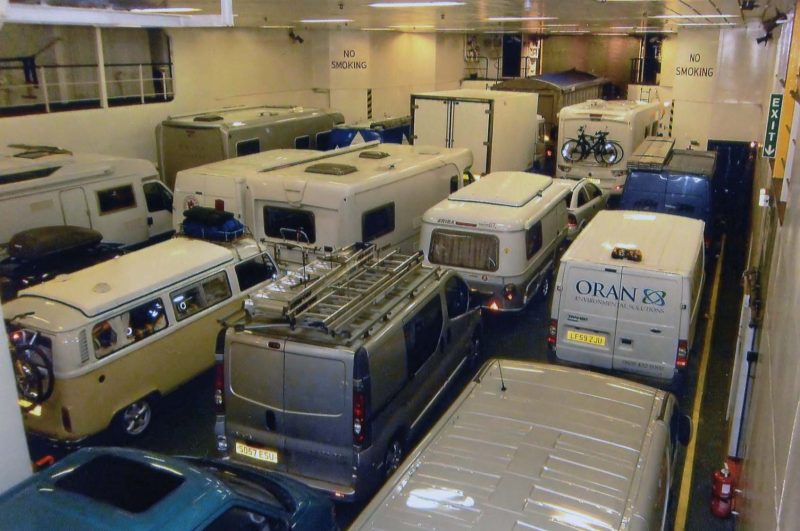
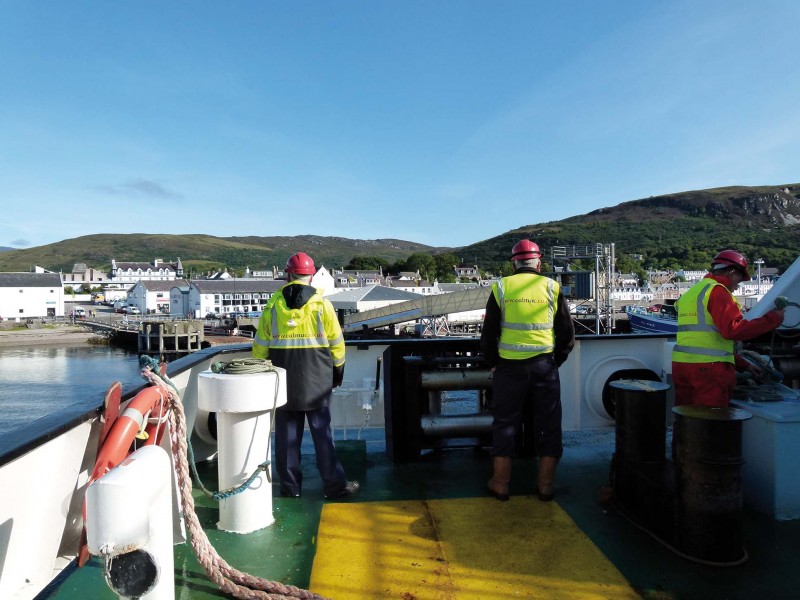
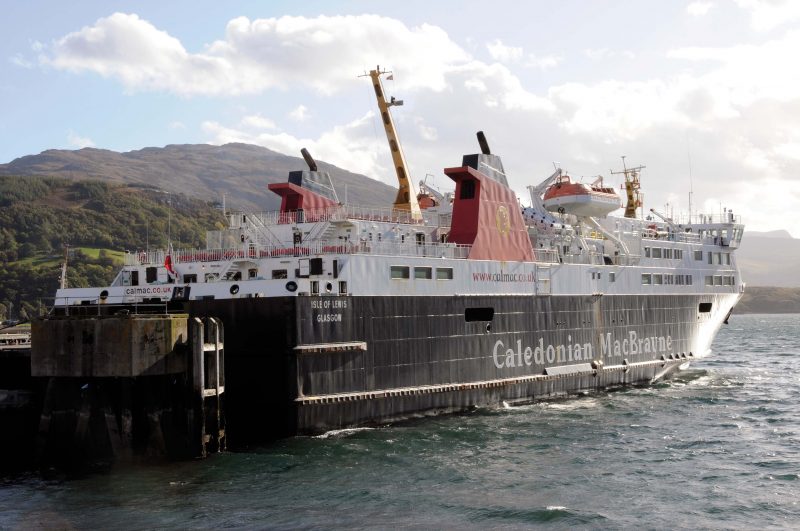
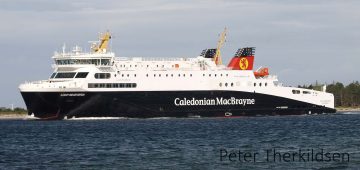



Comments
Sorry, comments are closed for this item